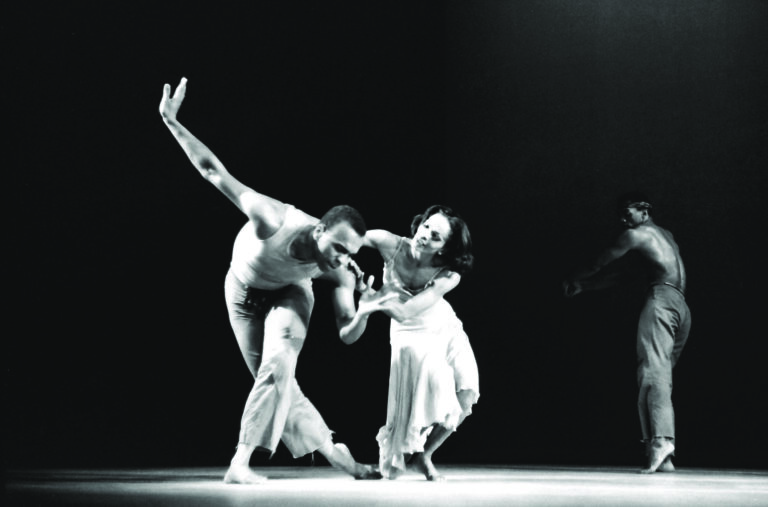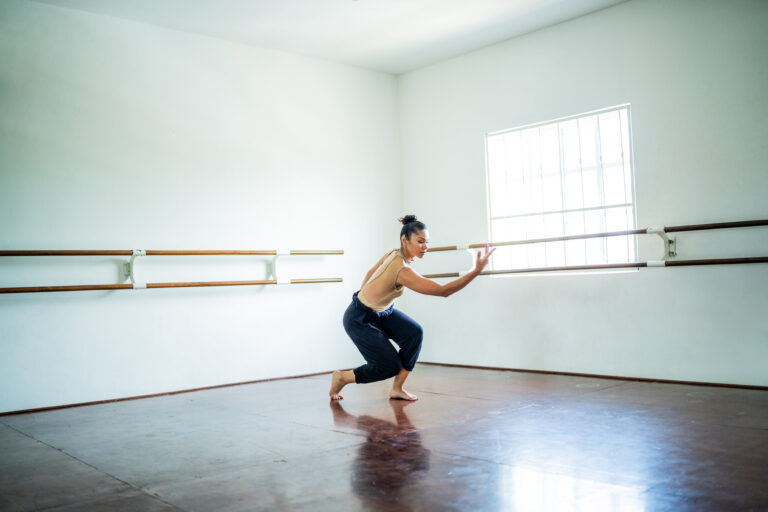How I teach a pirouette
Katrina Killian and Jasmine Perry at SAB
The pirouette is a dazzling feat when performed onstage. But for a teacher in class, it can be a great revealer, unveiling possible flaws in a student’s technique. Does she hold tension in her neck, open her ribs or sink in her supporting hip? Do her arms hang, unconnected to her torso? While all codified methods offer a distinct approach to successful turns, pirouettes properly performed within the Balanchine technique are the most striking.
George Balanchine founded the School of American Ballet with Lincoln Kirstein in 1934 and established a syllabus to prepare dancers for Balanchine’s choreography, which pushed them to new technical achievements. “He wanted a length throughout a dancer’s body,” says SAB faculty member Katrina Killian. “In his technique the whole body is active. Gorgeous, long lines are created.”
Beginning and ending in an extended fourth position, Balanchine’s pirouettes are spotted front. “It helps the supporting leg, back toe and arms all pull in together,” Killian says. “But even piqué turns from the corner are spotted front so the audience can see a ballerina’s face.”
Though Killian teaches at all levels, she has a particular affinity for ages 11 and 12, SAB’s fourth division. “In that year, they learn everything they need to know. They come in with the basics, but then they learn the bigger jumps—they learn battu. They also start turning. It’s fun to push them.”
Yet students at that age are unpredictable, and every day brings new challenges. “I can have an idea of what I want to cover when I enter the classroom, but as soon as they stand at the barre, I have to change those ideas in the moment,” Killian says. Proper technique for all movement begins at the barre, and she stresses weight placement and lower-leg precision. “Just standing in first position, it’s important to make sure a student never locks back in hyperextension. Her weight is never on her heels; it’s forward. She has to lift up out of her sitz bones, and over the balls of her feet.”
Here, Killian shows how these concepts transfer to a wide fourth, in preparation for pirouette, as she and her student Jasmine Perry demonstrate a pirouette en dehors, a step first introduced in soft shoes at age 11.
Katrina Killian studied ballet at the Central Pennsylvania Youth Ballet before attending the School of American Ballet. At 18, she became a member of New York City Ballet. As a soloist with NYCB, she performed in many leading roles, including Balanchine’s A Midsummer Night’s Dream, Jewels and Stars and Stripes. In 1988, she originated a principal role in Jerome Robbins’ Ives, Songs. Killian became a full-time faculty member of SAB in 1998, and she currently serves as ballet mistress for NYCB’s Education Department. In this role, she stages student productions for Ballet Bridges, an education outreach program serving over 2,000 public school children each year.
Originally from Charlotte, North Carolina, Jasmine Perry, 15, is currently completing her first winter term at the School of American Ballet. Follow her on the latest season of “Dance212.” Visit: www.dance212.com.
(Photo by Matthew Murphy at the School of American Ballet in New York City)




